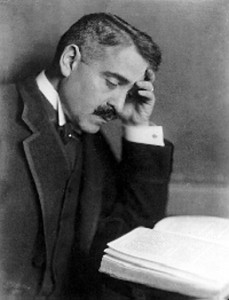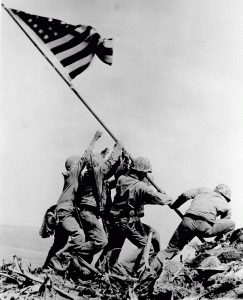While to many the idiom, “a picture is worth a thousand words” is nothing more than an overused cliché, to some this phrase could not prove to be more accurate.
When Spanish settlers first arrived in Mexico, it became their mission to convert the natives of common day Mexico. The Spanish people forced the natives to assimilate themselves to the Spaniard’s language and religion and almost immediately upon settling, the conquistadors began outlawing parts of the Native culture. Most significant was the shift in religion that began to take place. The change started slowly, but eventually, the Native’s no longer knew how to practice their own religion. As Carlo Severi, an Italian anthropologist, discussed in his presentation, as the number of Franciscans began to dwindle, a new religion was born. Essentially, this new religion was based upon one image—an image of Dona Sebastiana.
The picture of Dona Sebastiana, arrow in hand, came to represent this new religion. It has been said that she was the angel of death and she picked who would next serve as priest by shooting an arrow at them. Thus, people sacrificed their lives for their religion. By merely looking at the image of Dona Sebastiana, one can understand just how much these Natives yearned for Christianity—they looked to the image of Dona Sebastiana because without it, they felt that God had abandoned them. For the Natives, the image represented much more than an simple picture.
Few people have studied the versatility of art in a more in depth manner than Aby Warburg. Warburg, a German art historian and theorist, believes that images serve far more than aesthetic purposes. He believed that art is a means of communication, a way of uniting communities and representing ideologies.
In his final years of life, Warburg became increasingly enthralled with the concept of memory and how images can actually construct the memory of an entire society.
He believed that one image may come to represent everything in which a culture is based.
I could not agree more with Aby Warburg. In my opinion, the quality of an image has nothing do with its aesthetic beauty. Rather, the most important aspect is the subject matter and the story the image represents. My favorite photograph, the flag raising at Iwo Jima, has come to represent the United State’s main goal: freedom and justice for all. It captures a memory in American history that will never be forgotten. A memory that Americans can look at in times of tribulation, which will give them strength to carry on. While aesthetically it may not be the most beautiful photograph, there is no denying that its power of unification is worth a thousand words.
Works Cited:
Image 1:http://www.catherineroblesshaw.com/images/rubel%20death%20cart.jpg
Image 2: http://www.defense.gov/specials/nativeamerican01/images/lflage.gif
Image 3: http://upload.wikimedia.org/wikipedia/commons/c/c4/Aby_Warburg.jpg



